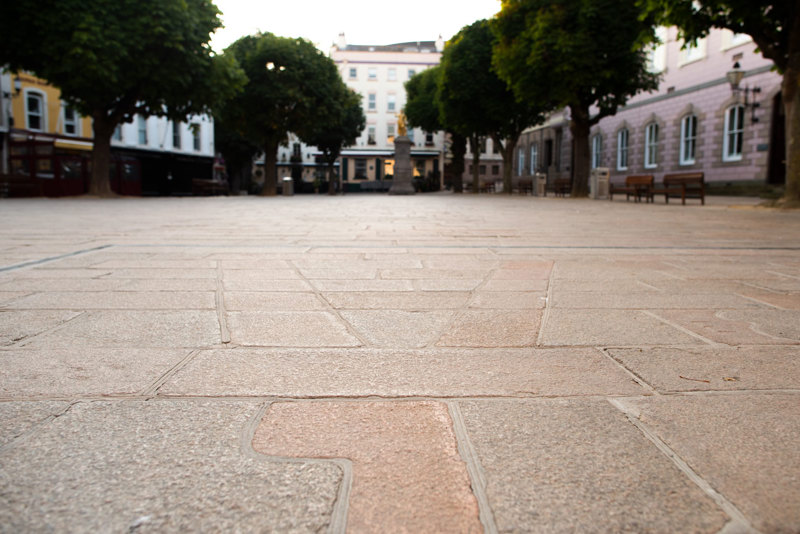One man's act of defiance
During the Occupation, Jersey's Department of Labour tried to offer local people opportunities to work and earn much needed money, creating employment schemes such as improving roads and building roadside walls.
One such scheme during the final months of Occupation was to re-lay the paving in the Royal Square.
A defiant show of patriotism
The stonemason employed was the free-spirited Joseph Le Guyader. Joseph had recently worked on the Roman Catholic Church of the Sacred Heart at St Aubin, where he incorporated a symbolic anchor of coloured granite into the façade to show compassion for the lives lost at sea in the South Atlantic during the early stages of the war.
Now, after more than four years of Occupation and with Germans all around, he decided to show his patriotism. The Allied forces were winning the war, and Joseph resolved to commemorate this for posterity by laying a large 'V' for victory in the paving. As the work progressed, he moved his equipment and materials around to hide his work beneath, finally revealing it at the time of the Liberation.
Recognition
Subsequently the shaped stones spelling 'Vega' and '1945' were added next to the 'V', in recognition of the delivery of Red Cross supplies brought by the SS Vega during the last six months of the war.
Years later the letters were carved into the stone and a border placed around the tribute, which was unveiled in 1972 by the Duchess of Kent. Today, Joseph's grandson Chris continues the family tradition, working as a stonemason.
Of all the memorials in Jersey, this is perhaps the best appreciated: one man's act of defiance.

